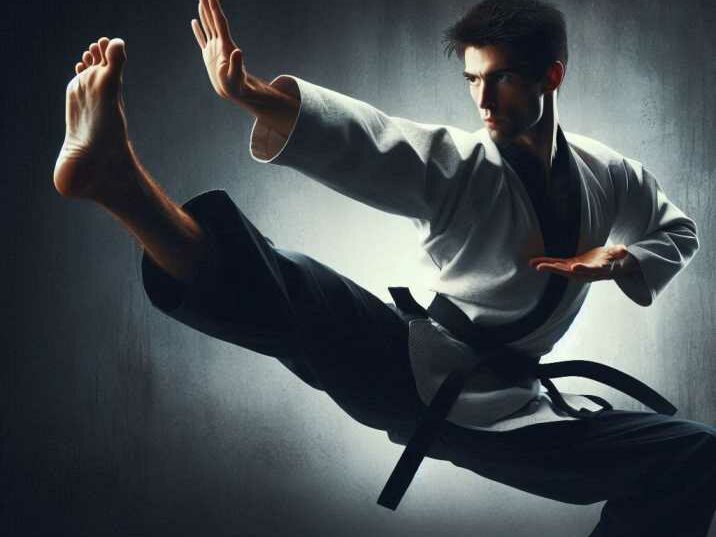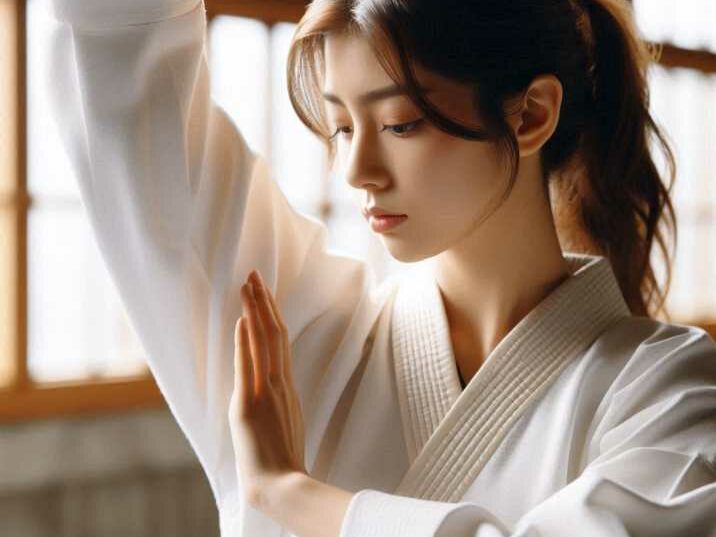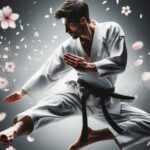Introduction
Table of Contents
Tang Soo Do is a traditional Korean martial art that focuses on self-defense, discipline, and physical fitness. One of the most important aspects of Tang Soo Do is learning and practicing forms. Forms, also known as hyung in Korean, are choreographed sequences of movements that simulate fighting against imaginary opponents. This article will explore the different Tang Soo Do forms, their importance, and how they help improve martial arts skills.

Table of Contents
- What are Tang Soo Do Forms?
- History of Tang Soo Do Forms
- Basic Forms in Tang Soo Do
- Ki Cho Hyung
- Pyung Ahn Hyung
- Advanced Forms in Tang Soo Do
- Bassai
- Naihanchi
- The Importance of Practicing Forms
- How to Practice Tang Soo Do Forms
- Tips for Perfecting Your Forms
- FAQs
What are Tang Soo Do Forms?
Tang Soo Do forms are choreographed sequences of movements that involve blocks, strikes, kicks, and stances. They are designed to enhance students’ coordination, balance, and technical skills. Each form has a distinct purpose and difficulty level, allowing practitioners to advance in their training as they become more proficient.
History of Tang Soo Do Forms
Tang Soo Do forms have a rich history rooted in ancient Korea. They have been influenced by various martial arts styles, particularly Chinese Kung Fu and Japanese Karate. Over the years, these forms have evolved into the unique patterns practiced in Tang Soo Do today, reflecting the martial art’s diverse heritage and development.
Basic Forms in Tang Soo Do
Ki Cho Hyung
Ki Cho Hyung are the fundamental forms in Tang Soo Do. “Ki Cho” means “basic” and “Hyung” means “form.” These forms are designed to teach beginners the essential movements and techniques of Tang Soo Do. There are three main Ki Cho Hyung forms:
- Ki Cho Hyung Il Bu: This is the first basic form, focusing on simple movements like front stance and low block.
- Ki Cho Hyung E Bu: The second basic form introduces more advanced techniques like middle punch and high block.
- Ki Cho Hyung Sam Bu: The third basic form combines the techniques learned in the first two forms and adds new movements like side kick.
Pyung Ahn Hyung
Pyung Ahn Hyung are intermediate forms that build on the basics learned in Ki Cho Hyung. “Pyung Ahn” means “peace and confidence.” These forms are designed to help students develop stability and self-assurance in their techniques. There are five Pyung Ahn forms:
- Pyung Ahn Cho Dan: This form focuses on balance and introduces the low back stance.
- Pyung Ahn E Dan: The second form adds new techniques like the knifehand block.
- Pyung Ahn Sam Dan: The third form emphasizes fluidity and introduces the reverse punch.
- Pyung Ahn Sa Dan: This form includes more complex movements like the double knifehand block.
- Pyung Ahn Oh Dan: The fifth form combines all the techniques learned in the previous forms and adds new kicks and strikes.
Advanced Forms in Tang Soo Do
Bassai
Bassai, also known as Passai, is an advanced form that means “to penetrate a fortress.” This form is designed to develop power, speed, and precision. It includes a variety of techniques, such as the back fist strike and the crescent kick.
Naihanchi
Naihanchi, also known as Naebojin, is another advanced form that focuses on close-quarters combat. This form emphasizes strong stances, quick movements, and powerful strikes. It includes techniques like the elbow strike and the side punch.
The Importance of Practicing Forms
Practicing forms is essential for mastering Tang Soo Do. Forms help students develop muscle memory, improve their techniques, and build confidence. They also provide a way to practice self-discipline and focus, which are important aspects of martial arts training.
How to Practice Tang Soo Do Forms
Essential Tang Soo Do Forms
Basic to Advanced Forms:
- Basic Forms (Ki Cho Hyung): These are the foundational patterns taught to beginners. The focus is on fundamental movements and techniques, such as stances, blocks, and basic strikes. The basic forms help students build a strong base in martial arts.
- Intermediate Forms (Pyung Ahn Hyung): These forms build on the basics, introducing more complex techniques and sequences. They aim to develop balance, stability, and confidence in the student’s skills. The intermediate forms are crucial for transitioning from basic to more advanced techniques.
- Advanced Forms (Bassai, Naihanchi): These are more complex and demanding forms that require a high level of skill, precision, and power. Advanced forms challenge students to perfect their techniques and demonstrate a deep understanding of the martial art.
Enhancement of Martial Arts Skills
Coordination and Balance: Practicing forms helps improve coordination and balance. Each movement requires precise control and timing, which translates into better overall body mechanics and stability.
Technique Development: Forms are designed to refine various martial arts techniques, including strikes, blocks, and kicks. Repetition of these patterns helps engrain proper technique into muscle memory.
Self-Discipline and Focus: The practice of forms demands concentration and self-discipline. Students learn to focus their mind and body, which is essential for effective martial arts training and self-defense.

History and Significance of Tang Soo Do Forms
Historical Influence:
- Ancient Korea: Tang Soo Do has roots in ancient Korean martial arts, which were influenced by various styles from neighboring regions.
- Chinese Kung Fu and Japanese Karate: The forms in Tang Soo Do reflect the integration of techniques and principles from Chinese Kung Fu and Japanese Karate. This blend has evolved into unique sequences that define Tang Soo Do today.
Significance:
- Cultural Heritage: The forms carry the cultural and historical heritage of Korean martial arts. Practicing these forms connects students to the traditions and philosophies of Tang Soo Do.
- Training Framework: Forms provide a structured framework for training, ensuring that students systematically learn and master different aspects of martial arts.
Techniques of Tang Soo Do Forms
Key Techniques in Each Form:
- Ki Cho Hyung Il Bu: Emphasizes simple movements like front stance and low block.
- Ki Cho Hyung E Bu: Introduces more advanced techniques, such as middle punch and high block.
- Ki Cho Hyung Sam Bu: Combines techniques from the first two forms and adds new movements like side kicks.
- Pyung Ahn Cho Dan: Focuses on balance and low back stance.
- Pyung Ahn E Dan: Adds techniques like the knife-hand block.
- Pyung Ahn Sam Dan: Emphasizes fluidity and introduces the reverse punch.
- Pyung Ahn Sa Dan: Includes more complex movements like the double knife-hand block.
- Pyung Ahn Oh Dan: Combines all previous techniques and adds new kicks and strikes.
- Bassai: Develops power and speed with techniques like back fist strike and crescent kick.
- Naihanchi: Focuses on close-quarters combat with strong stances and techniques like elbow strike and side punch.
Elevation of Training
Muscle Memory: Regular practice of forms helps develop muscle memory, making techniques more instinctive during actual combat or sparring.
Confidence Building: Mastering forms boosts students’ confidence in their abilities, which is crucial for effective self-defense and overall martial arts performance.
Physical Fitness: Forms practice contributes to physical fitness, improving strength, flexibility, and endurance.
FAQs
Q1: What is the first form in Tang Soo Do?
A1: The first form in Tang Soo Do is Ki Cho Hyung Il Bu.
Q2: How many forms are there in Tang Soo Do?
A2: There are many forms in Tang Soo Do, including basic, intermediate, and advanced forms.
Q3: Why are forms important in Tang Soo Do?
A3: Forms are important because they help students develop technique, coordination, balance, and confidence.
Q4: What does “Pyung Ahn” mean?
A4: “Pyung Ahn” means “peace and confidence.”
Q5: How can I improve my forms?
A5: You can improve your forms by practicing regularly, focusing on technique, and seeking feedback from your instructor.
Conclusion
Tang Soo Do forms are a crucial part of martial arts training. They help students develop essential skills, improve their techniques, and build confidence. By practicing forms regularly and focusing on proper technique, students can progress in their Tang Soo Do journey and achieve their martial arts goals.
Table of Information
| Form Name | Level | Key Techniques |
|---|---|---|
| Ki Cho Hyung Il Bu | Basic | Front stance, low block |
| Ki Cho Hyung E Bu | Basic | Middle punch, high block |
| Ki Cho Hyung Sam Bu | Basic | Side kick, combination movements |
| Pyung Ahn Cho Dan | Intermediate | Low back stance, balance techniques |
| Pyung Ahn E Dan | Intermediate | Knifehand block |
| Pyung Ahn Sam Dan | Intermediate | Reverse punch, fluid movements |
| Pyung Ahn Sa Dan | Intermediate | Double knifehand block |
| Pyung Ahn Oh Dan | Intermediate | Advanced kicks and strikes |
| Bassai | Advanced | Back fist strike, crescent kick |
| Naihanchi | Advanced | Elbow strike, side punch |
Image Descriptions
Image 1:
- Alt Text Title: Ki Cho Hyung Practice
- Description: A young martial artist practicing the Ki Cho Hyung Il Bu form in a dojo.
- Placement: Place this image near the section discussing the Ki Cho Hyung forms to visually represent the basic techniques being described.
Image 2:
- Alt Text Title: Advanced Tang Soo Do Form
- Description: A martial artist performing the Bassai form with precision and power.
- Placement: Place this image near the section discussing the advanced forms to highlight the complexity and intensity of these techniques.
By understanding and practicing Tang Soo Do forms, students can enhance their martial arts skills and achieve a deeper connection to this traditional Korean martial art. Happy training!


